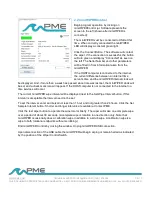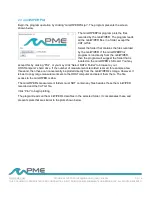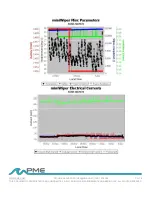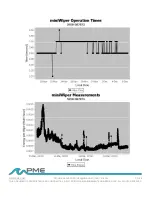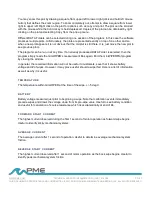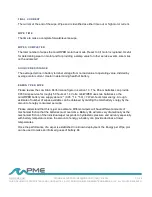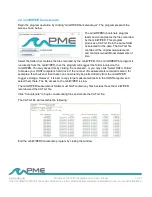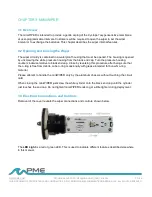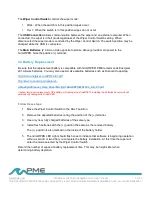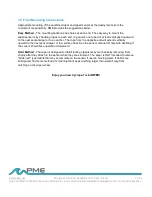
TECHNICAL SUPPORT: [email protected] | (760) 727-0300
PG. 22
THIS DOCUMENT IS PROPRIETARY AND CONFIDENTIAL. © 2021 PRECISION MEASUREMENT ENGINEERING, INC. ALL RIGHTS RESERVED.
F I N A L C U R R E N T
The current at the end of the wipe. Wipe end is identified as either time out or high motor current.
W I P E T I M E
The time to make a complete forward/reverse wipe.
W I P E S C O M P L E T E D
The total number of wipes the miniWIPER motor has made. Reset to 0 if motor is replaced. Useful
for determining wear on motor and for providing a stamp value for other service events. Like miles
on the odometer!
S O U R C E R E S I S T A N C E
The average decline in battery terminal voltage from no load value to operating value, divided by
average motor current. Useful in determining health of battery.
E N E R G Y P E R W I P E
Please review the Low Drain Performance figure in section 1.3. The lithium batteries can provide
0.050 Amp service for roughly 50 hours at 1.4 Volts. miniWIPER uses two batteries so the
miniWIPER battery can supply about 2 * (0.05 * 1.4 * 50) = 7 Watt-hours total energy. A rough
estimate of number of wipes available can be obtained by dividing the total battery energy by the
amount of energy consumed per wipe.
Please understand that this is just an estimate. Different wipers will have different amounts of
mechanical friction that the batteries must overcome. Battery life will also vary dramatically as the
mechanical friction of the individual wiper responds to hydrostatic pressure and will vary especially
with battery temperature since the amount of energy a battery can provide declines at lower
temperatures.
Once the performance of a wiper is established in a known deployment, the Energy per Wipe plot
can be used to make an informed guess of battery life.










